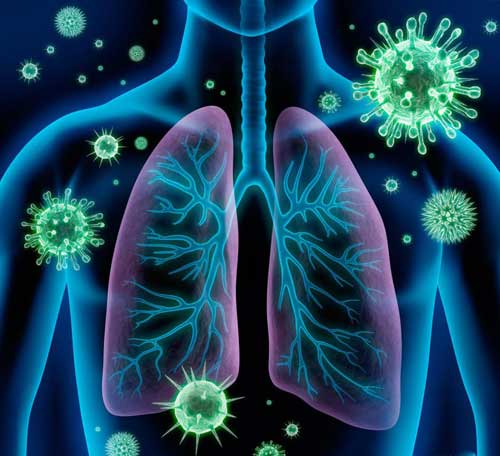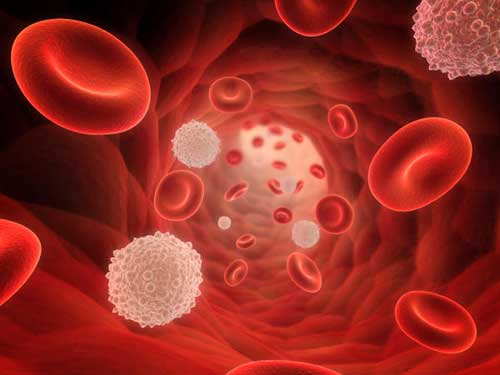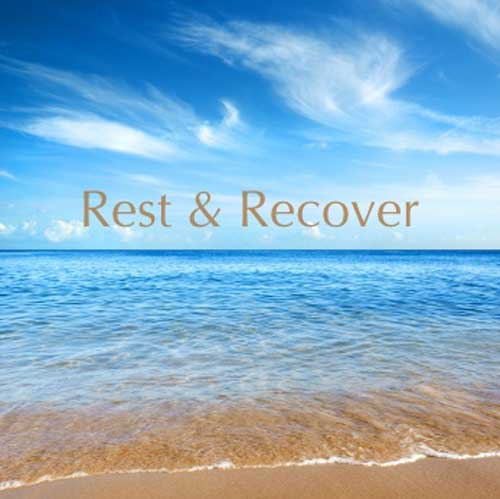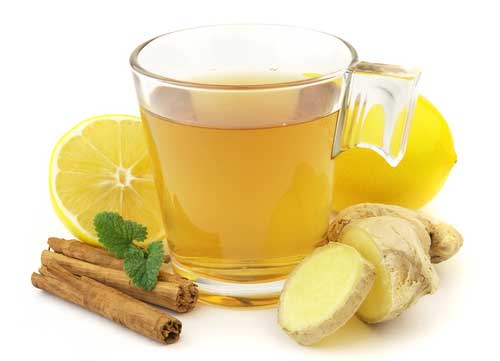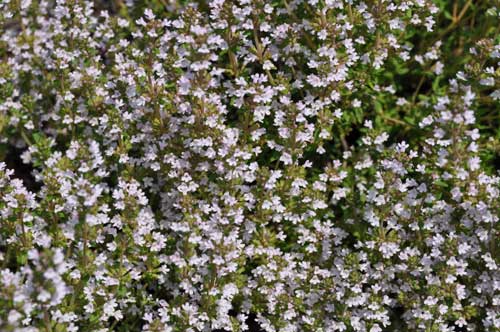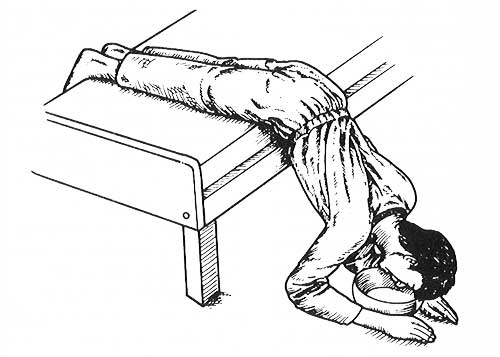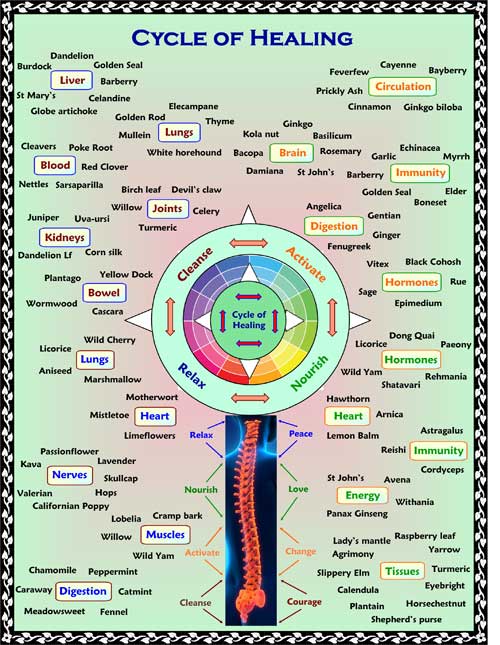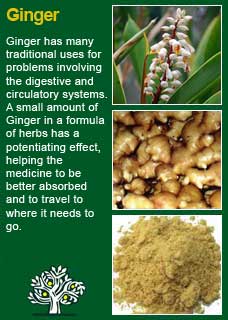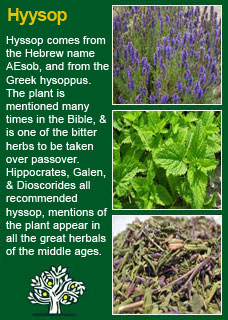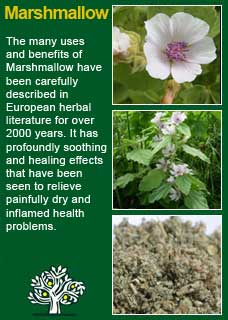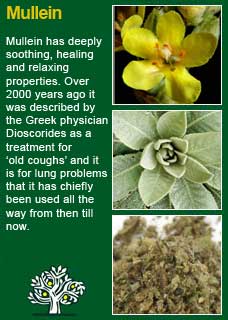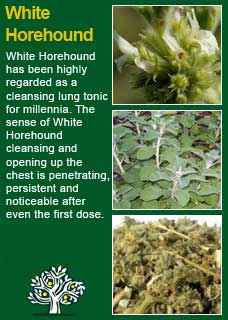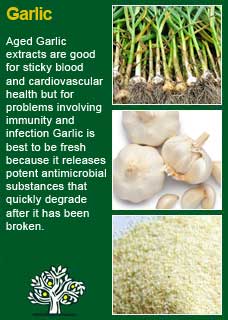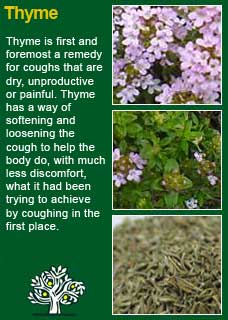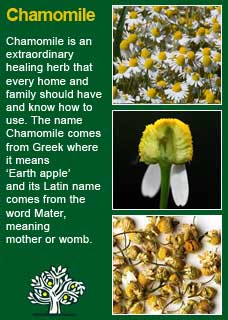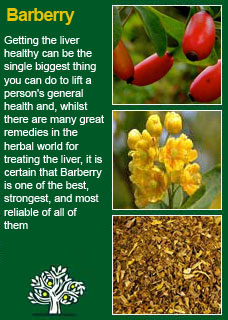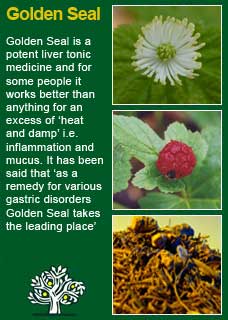
|
|
||
| Our Pages ABOUT CONSTITUTIONAL MEDICINE
|
Herbal traditions have developed some extremely useful remedies to help treat and heal respiratory disease. Up until very recently, herbs were the only medicines we had, and effective treatments could literally mean the difference between life and death! Bronchitis refers to an infection or irritation of the ‘bronchi’, - the passageway from the windpipe (trachea) to the lungs. Pneumonia refers to infection or irritation of the lungs. Both conditions are much more common in the winter, as they usually follow from an upper respiratory tract infection. Acute or sudden pneumonia can be especially serious in the elderly. People who abuse drugs and alcohol are also generally susceptible to bronchitis and pneumonia because their immune systems are typically very low. Children are more likely to develop bronchitis (and asthma) if their parents smoke or if they are exposed to high levels of formaldehyde, one of the chemicals that give cars and home furnishings that ‘new’ smell. There are several ‘types’ of pneumonia; bacterial pneumonia is the most abrupt and severe in symptoms, viral pneumonia is generally of lesser severity and with a drier cough; bronchopneumonia is associated with acute bronchitis and tends to have a fluctuating pattern of fever. Legionnaires disease is also a form of bacterial pneumonia. The bacterial-forms of respiratory disease have always been the deadliest because of the speed and virulence of their attack, antibiotics should be used without hesitation in these cases. Pneumonia is still the leading killer amongst infectious diseases and is our fifth leading cause of death overall however the great majority of these cases will have involved one of the non-bacterial forms of the disease; this means that the methods discussed below are still extremely important today.
Most people will automatically expect antibiotics when they get bronchitis or pneumonia and most doctors willingly prescribe them... but is this the best thing to do? In cases of bacterial infections, which hit particularly hard and fast, yes, an antibiotic is most certainly necessary. However, these days most cases of bronchitis and pneumonia do not require antibiotics because they are caused by viral infections and antibiotics can only be useful in bacterial infections. To illustrate this further, over the past twenty years there have been a number of carefully randomised, controlled trials to assess the benefits of antibiotics in treating acute bronchitis. (Acute bronchitis is defined as the sudden onset of a productive cough in a patient with no history of asthma, no chronic obstructive pulmonary disease, and no evidence of pneumonia). Seven double-blind trials have now shown no clinical benefit from antibiotic treatment for acute bronchitis. Nevertheless, over seventy percent of doctors routinely prescribe an antibiotic for acute bronchitis even though it provides no benefit and is associated with significant risks. The risks include overgrowth of candida albicans, disruption of normal gut microflora, and the development of antibiotic resistant strains of bacteria. There is also no data to support the use of antibiotics in response to fever in acute bronchitis or in the hope of preventing progression to pneumonia. Often, doctors prescribe antibiotics for acute bronchitis because their patients believe that only an antibiotic can cure them. This belief is well illustrated by the fact that sixty percent of eligible patients refused to enter one double-blind study because they felt that antibiotics were absolutely necessary. Given both the doctors and patients beliefs and expectation, it is little wonder the antibiotics continue to be prescribed for a condition in which they are simply not warranted and may in fact do harm...
Herbal medicines have a long history of use in this area and there is a treasure chest of herbal medicines for different stages or states of bronchitis and pneumonia. It is really important to keep the chest warm and to prevent it from getting chilled. Preventing getting chilled when outside; scarves, hats, gloves. If you are very sensitive to the cold, try using products of Merino & Possum fur, they are excellent. If you have already got a chill on your chest then use a hot wheat bags or hot water bottles to drive it out as soon as you possibly can. If you are too cold in general, then a tea made from fresh ginger, lemon, honey, and perhaps some cinnamon, will work quickly to restore warmth; recipe found here Avoid taking drugs that lower your temperature! Even though they may give you some temporary relief, the use of drugs to arrest the body's attempt to mount a temperature is the number one reason for an infection that could have been resolved in just 2 or 3 days turning into something that goes on for weeks or even months. We evolved the fever mechanism for good reason. A high temperature activates our immune system and makes us fight back hard against the bugs that threaten our survival. If you are young enough or strong enough to get your temperature up and break through the illness yourself then be of stout heart and go for it. If, however, you do not have the vital reserves to mount a fever and you end up hovering at just a mildly elevated temperature, not getting worse but not really getting better, then the best thing you may be able to do to help is to work with Nature and do some 'sweating therapy' This is a tough treatment to do but it works, detailed instructions here
We must cough to clean our lungs, but an unproductive cough can be a true torture. Certain herbs are famous for helping to make a cough easier and more productive, they are called expectorants. Herbal expectorants increase the quantity, decrease the ‘stickiness’ and promote the expulsion of the secretions of the mucous membranes that line the respiratory tract. Many herbal expectorants also have antibacterial and antiviral activity. Below is a short list of some of the main ones we use. You can learn more about them in the herbal A-Z found here
Steam-inhalations are essential for bronchitis and pneumonia. If the condition is quite 'dry' and you are producing little mucus, then it may only be necessary to do a steam once or twice a day however, if you have plenty of mucus or debris in your airways, then frequent steam inhalations should help a great deal. There are several techniques to do steam inhalations, more on this important treatment here
One of the main treatment goals in cases of bronchitis and pneumonia is to help the lungs and air passages get rid of excessive mucus. Use the technique of postural drainage if you have a lot of mucus in your lungs or bronchial tubes and are having trouble getting it out.
I've been in practice in Christchurch, New Zealand since 1989. Many people have come in with a history of bronchitis or pneumonia since then and, at the time of editing this page, there have been several new patients who have come in with bronchitis or pneumonia in the last few months, so I've been looking over their notes and thinking about how I approach this in the real world. This is a typical prescription.
We make our own tinctures from organic dried herbs, so it might be important that you understand that the optimal dose range will vary with different preparations made by different companies or practitioners, The above liquid extracts were combined into a formula to make 540mls. This will just fit in to a 500ml amber pharm round bottle and is enough to last 4 weeks if taken at the maximum safe and effective dose of 10mls twice a day, which is what we used. These are some of the most important herbs in Nature to improve the health of the lungs. They all work in different ways but combining them into a formula like this gives a better result than could be achieved by using them individually. Any of them can be learned about in more depth in the Herbal A-Z found here
Dosage, two capsules twice daily. Cordyceps is a very weird, very potent, but entirely safe fungi that helps to strengthen the lungs and immune system.
We import organic dried Echinacea angustifolia and Astragalus root, get them freshly milled and then send them to a local company to be processed into capsules. These are two of the best herbs in all of Nature to strengthen and support the immune system. The capsules are quite big, 600mg of the two herbs combined in each one, and in each case I used a high dose of 3 capsules, twice daily.
The method of creating a steam inhalation that combines the cleansing action of Olbas and the soothing anti-inflammatory action of Chamomile flowers is described in detail in the article on inhalations found here
The first step in the healing journey is the one in which Nature can help us back to health. We come to a point where we need to ask for help and then these ancient allies, these herbs, are there to support and help us to get well. The first step was to use the prescriptions as shown above. The next step is what I call the 'work'. It is what the patient does to help themselves. Underlying all the old ways of healing is an understanding that all living organisms have the innate ability to self-regulate and self-repair, unless something is obstructing that self-healing intelligence. The 'work' is usually about doing something that helps to remove the obstacles that are getting in the way of their getting well. Of the three recent cases, I see that we had one from the Bear constitution (cooler and damper) and two from the Eagle constitution (hotter and dryer). This old way of understanding our differences is of great practical benefit in treating something that can be as serious as bronchitis or pneumonia so if you, or someone you care for, are having troubles in this area, you can learn more about the general subject of the constitutions by starting here, and then working out which constitution you or they are by going here After getting a sense of whether a person is naturally cooler or hotter, dryer or damper, the next level of knowledge to take the kind of personal approach that can be essential to a great result is to look into the healing cycle. This is a fascinating subject in itself and understanding it can give great insight into what needs to be done to treat the cause and help healing happen naturally. There are four stages in the cycle; cleansing, activation, nourishment and rest. One of my patients, one of the Eagles, simply had to simply get more rest, they were clearly run down from lack of sleep and their illness had been brewing for some time before they became so sick that they were no longer able to work. Even when I met them, they were still struggling against, and resisting their body's need for, deep rest and sleep. Therefore, their 'work' was to do the things that relaxed them and to help them to unwind. They read books, watched movies, stopped forcing things and allowed themselves to sink into their tiredness, for as long as it took to get better. Which wasn't long when they finally gave themselves 'permission to rest'. The second patient, the Bear, had not been looking after their diet or their fitness. They had become overweight, and had been eating a lot of processed food, a lot of sugars. Their bigger picture, their 'work' was to go on to a clean healthy diet of whole foods and, as soon as they were clearly getting on top of their condition, to begin a daily practice of walking. They took to this well and were clearly well on track the 2nd and last time I needed to see them. There is even a comment in the notes that they said, 'pneumonia was the wake-up call I'd been needing for a long time' The third patient, also an Eagle, had a serious history of heart disease, she was in her late 60s, (whereas both the other two were in their 40s) and was on much too many heart and blood pressure drugs. We used a treatment program very similar to the above (along with plenty of Hawthorn berry in capsule form) and she has been in a process of slowly getting off her blood pressure drugs with careful home checking on a reliable device whilst also getting more rest and starting to build up her fitness. She was prescribed one drug nearly 30 years earlier and by the time she was in hospital with pneumonia it had built up to over 10 different pills a day. No-one questions whether it might be wise to stop using them after a while because they are too afraid of something bad happening but eventually the harm starts to outweigh the good. Anyway, all three had excellent responses and, by their 2nd visit a month later, all three were at least 80-90% better in their breathing. I didn't need to see the first two for a third visit, but they were told to keep using their herbs for as long as they needed (people usually go on to a once a day treatment program for at least another couple of months to help ensure there is no relapse of the illness). The last patient I have kept seeing and she is doing well, but it is very slow and she is still at high risk of getting gravely sick if she doesn't build up her 'vital reserve' a lot further. Over the years, I've treated many people who have had either bronchitis or pneumonia or both. There is no doubt that a holistic approach that includes herbs and attention to the underlying health picture works extremely well and that it may be relied on to help. However, when a person gets so sick that the illness goes deep into their chest, they must be very careful, for many months, to take great care of themselves so as not to sick again. Whether that care includes using herbal respiratory or immune tonics is an individual matter, but it will certainly be essential to ask some searching questions about why the illness was able to penetrate so deeply in the first place. I recommend anyone who wants to get better in charge of their health, when they are ready, to delve into the fascinating, and useful subject of the cycle of healing - more here
Please understand that I cannot personally advise you without seeing you in my clinic. |
|
|
© 2011 R.J.Whelan Ltd
